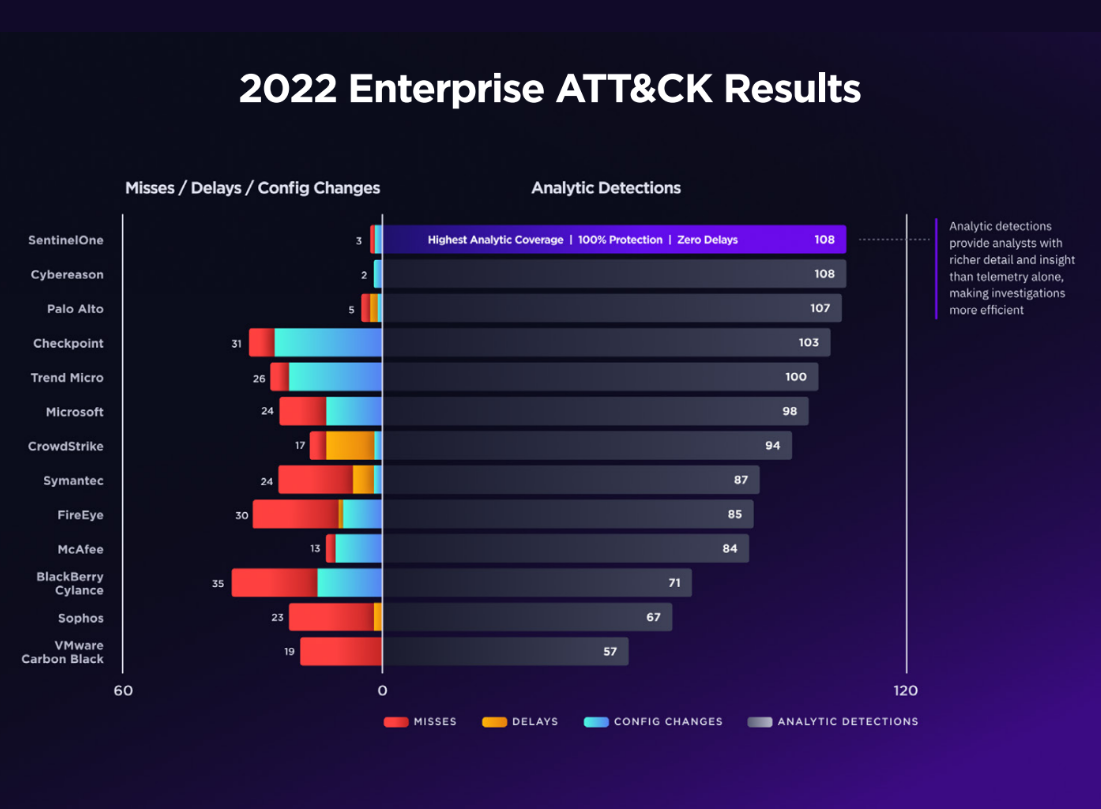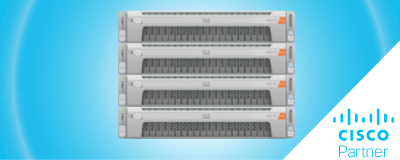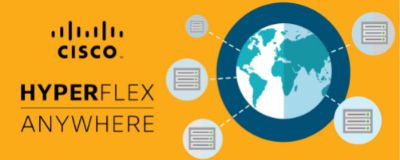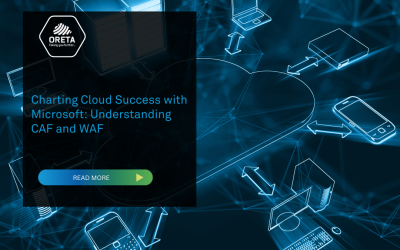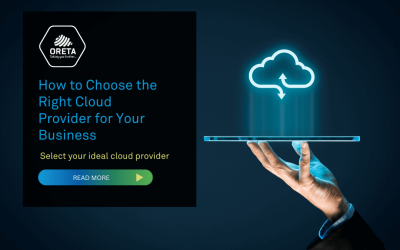Awareness of Software-Define Wide Area Networking (SD-WAN) is growing. More and more companies are looking toward the next generation of WAN technology. And, the battle between the geniuses of SD-WAN technology, Cisco and VMware, is heating up.
In this article, we compare SD-WAN solutions, discuss the benefits of each, and outline which solution may be best for your business depending on your requirements.
SD-WAN – Biggest Trend In Enterprise Networking Today
For those of you who are still fresh to the game, let’s quickly explain what SD-WAN is and why more and more companies are investing in it.
SD-WAN is the most significant trend in enterprise networking today. Demand is accelerating as companies look to increase agility, achieve high performance, and secure connections to cloud applications. SD-WAN uses software to control the connectivity, management, and services between data centres and remote branches.
The five main features of SD-WAN include the ability to;
- combine multiple connection types, from MPLS to broadband to LTE, serving one location into a single pool of capacity available for all applications and services,
- centrally define and manage policies and network traffic without requiring manual configuration at each device,
- set up a simple interface for managing WAN which supports zero-touch provisioning at a branch or site,
- support VPNs and other third-party services, such as WAN optimisation controllers, firewalls, and web gateways,
- customise bandwidth and connectivity to meet the needs of specific network services, locations, or users.
As a Gartner report recently mentioned, SDWAN is a key technology helping enterprises transform their networks from “fragile to agile”. SD-WAN can help companies overcome many of the challenges they experience with legacy WAN, empowering their IT to work smarter, faster, and at a lower cost through network automation, traffic programming, and policy development.
Cisco SD-WAN vs VMware’s Velocloud
Now that we’ve defined what SD-WAN is let’s look at the differences between the two top contenders in the market; Cisco SD-WAN and Velocloud by VMware.
Before we start, we would like to emphasise that there is no definite answer to which vendor offers the best SD-WAN solution for your business. There are many variables you need to consider before you decide what is the best solution for your business. You need to take the time to understand each of their strengths and whether they complement your business objectives. In this article, we aim to help you make a more informed procurement decision.
What is Cisco SD-WAN?
In summary, Cisco SD-WAN is a highly adaptable solution allowing each site to have different control policies at a control plane level or data plane level.
What is Velocloud by VMware?
Velocloud offers out-of-the-box configurations making deployment fast and simple. Whilst SD-WAN components can also be customised, the solution is designed to allow DIY management with pre-configured policies. It is a critical component of the Virtual Cloud Network.
What Are The Eight Main Differences?
Difference 1 – Dynamic Path Selection
SD-WAN can select the most appropriate path or channel the network traffic will use, enabling cloud applications to leverage various options. By choosing the best approach, SD-WAN can maximise the use of circuits such as 4G/5G, Broadband, and Ethernet, thus increasing uptime and bandwidth.
Cisco SD-WAN Dynamic Path Selection – Cisco SD-WAN can help direct route traffic to the best-performing link by establishing route prefixes, metrics, link-state information, and route removals.
Based on SLA requirements, network traffic is recognised, and a policy is chartered to the traffic application. Identifying specific traffic applications requires the use of layers within the packets (e.g. ports, protocols). These packets, otherwise known as Viptela BFD’s (Bidirectional Forwarding Protocol), are used to screen the path’s characteristics and detect whether other paths need to be used due to possible latency.
Velocloud Dynamic Path Selection – Velocloud offers a Dynamic Multipath Optimisation feature that is very similar to Cisco SD-WAN’s BFD in the way that it can sense application characteristics. The feature includes link checking and detection of a specific provider. It allows automatic configuration deployment based on link properties, routing, and quality of service.
Difference 2 – Quality of Service (QoS)
SD-WAN makes QoS much more effective than MPLS. It removes the end-to-end benefit of an MPLS VPN and replaces it with a host of link preferences, out-of-the-box configuration templates, and pre-classification of link characteristics.
Cisco SD-WAN Quality of Service is similar to MPLS without the end-to-end characteristics of private network traffic flow. The Viptela capability allows ingress and egress interface direction toward vEdge routers in the network. With SD-WAN, Cisco SD-WAN can determine which links to use and applies a QoS capability depending on their characteristics.
Velocloud Quality of Service provides application traffic WAN settings across approximately 2,500 traffic sources. The advantage is an out-of-the-box ability to automate QoS and assist any one of those particular sources. SD-WAN builds application profile awareness, making it easier to outline QoS and bandwidth allocations.
Difference 3 – Link Steering and Remediation
Link Steering and Remediation occurs either per session or per packet. It is one of the key benefits of SD-WAN. It enables connections to link to traverse over WAN links, adjust link preferences, and create robust failover.
Cisco SD-wAN Link Steering and Remediation (Cloud OnRamp for SaaS) enables applications to choose their preferred connection, depending on the destination or if it is a Cloud application. If applications experience packet loss, increased latency, or complete outage, links can be steered to a new destination. Link performance is calculated by ranking, from 0 – 10, how well an application’s requirements are being met. A cloud interface manages the configuration and continuous changes to the Viptela platform.
VeloCloud Link Steering and Remediation – Velocloud’s SD-WAN solution can dynamically monitor traffic by censoring both the WAN edge and cloud application performance. With SD-WAN, a standard branch has two or more connections that require dynamic per packet switching for path optimisation.
Detecting traffic performance issues is done with link analysis. From here, the results provide information as to whether link switching is required and packets automatically routed.
Difference 4 – Application Performance Monitoring
Application Performance Monitoring is one of the critical deliverables of any SD-WAN solution. It provides network management engineers and IT teams the ability to observe issues and trends over time, which, in turn, helps them make strategic decisions regarding their network.
Cisco SD-WAN Application Performance Monitoring – The network’s performance, individual circuits, carriers, tunnel and individual application data points are assessed using a single dashboard, known as Viptela VAnalytics. For example, Network managers can instantly detect which applications are using the most bandwidth, as well as any unusual behaviour that requires immediate attention.
Velocloud Application Performance Monitoring – Velocloud provides insight into the performance across voice, video, and mission-critical data applications by calculating a WAN quality score. The monitoring tool provides a thorough assessment of application behaviour on single links and indicates where enhancements and changes are required.
Difference 5 – Security
Security – SD-WAN vendors often need a different device to ensure security is factored in. Whether or not your SD-WAN service supports Next-Gen firewall functionality depends on your vendor’s offering and your internal security strategy.
Cisco SD-WAN Security – Cisco SD-WAN provides stateful firewall capability, which in some ways is like the customary world of standard Firewalls (e.g. not Next-Gen firewalls).
Velocloud Security – Velocloud provides in-built context-aware (e.g., application, device, user) with Next-Gen Firewall. With SD-WAN, data can be micro-managed and mico-applications can be directed with proximate security.
Difference 6 – Network Function Virtualisation (NFV)
Network Function Virtualisation (NFV) segregates network functions from hardware to design a virtualised machine that operates on cloud-based commands, resulting in a flexible, cost-effective infrastructure.
Cisco SD-WAN Network Function – Cisco SD-WAN’s VEdge Cloud virtualises the technology from a physical VEdge capability and creates a Virtualised Machine (VM). With VEdge Cloud, a Virtual Network Function can create a Virtual CPE (vCPE) deployment within a company’s head office or branch location.
Velocloud Network Function – VMware Edge hardware supports Velocloud’s capability to virtualise. The technology is listed as VMware SD-WAN Gateway and is available with service chaining support which is seamlessly delivered by partners such as Zscaler and Websense.
Difference 7 – Zero-Touch Deployment
A major benefit of SD-WAN is fast deployment. It can quickly start an internet connection without fundamentally having to physically connect to any hardware.
Cisco SD-WAN Zero-Touch Deployment – Any Viptela device with internet connectivity is efficient at ‘zero provisionings’. Cisco SD-WAN needs a DHCP address from the network to get public DNS information. When booting, the vEdge router will connect to ztp.viptela.com.
Velocloud Zero-Touch Deployment – When connecting to the internet, Velocloud devices will auto-connect, authenticate and receive the appropriate configuration. The benefits of Velocloud’s Zero-Touch include deployment simplification and network migration.
Difference 8 – Automation and Orchestration
SD-WAN service providers need Software WAN orchestration to control, manage and deliver the end customer service. It often requires an SDN controller with virtualisation software that can automate the provisioning process.
Cisco SD-WAN Automation and Orchestration – Cisco SD-WAN provides a robust and true orchestration of SD-WAN services via its initial point of authentication. Distribution lists of their components, including VSmarts and VManage, are all supported across the deployment. The vBond Orchestrator delivers the SD-WAN capability by authenticating and authorising the Cisco SD-WAN elements into the network. Cisco vBond Orchestrator endorses the data points (i.e. Cisco VSmart Controllers and vEdge routers) in the network and coordinates how they will connect.
Velocloud Automation & Orchestration – Velocloud Orchestrator delivers Velocloud configuration across all aspects of the network. When devices connect to the internet and zero-touch deployment is active, VMware SD-WAN Edge appliances can auto-connect by following customised configuration instructions. Integration with existing networks can also be achieved, including support for the OSPF routing protocol.
Here’s a summary of the main differences between the SD-WAN solutions;
Cisco SD-WAN
|
VMware – Velocloud
|
|
An open solution is known for its flexibility and ease of deployment
|
Fast deployment
|
|
Functions on-premises or in the cloud
|
Three versions: internet only, hybrid SD-WAN, and on-premises
|
|
“Zero Touch” deployment
|
“Zero Touch” deployment
|
|
Policy provisioning via vSmart controller
|
Policy provisioning via VeloCloud Orchestrator
|
|
Number of applications supported: 3,000
|
Number of applications supported: 2,200
|
|
Unidirectional measurement and steering – No
|
Unidirectional measurement and steering – Yes
|
|
Network Performance Measurement: (passive) Proprietary
|
Network Performance Measurement: (active) BFD
|
|
Forward Error Control (for packet loss): No
|
Forward Error Control (for packet loss): Yes
|
|
Data Encryption: Yes
|
Data Encryption: Yes
|
What Else Do You Need To Know About VMware’s VeloCloud?
With Velocloud by VMware, it does not matter whether companies use MPLS or not; they can leverage wireless broadband internet or wired broadband internet. The solution has a performance indicator called VeloCloud Quality Score, which gives IT managers visibility regarding how the solution is operating.
Velocloud provides a robust Cloud Gateway-centric approach to SD-WAN, providing a continuous solution that reaches into multi-cloud, data centres and other application hosting solutions. The approach is not only considered forward-thinking but cutting edge.
What Else Do You Need To Know About Cisco SD-WAN?
Wich Cisco SD-WAN, companies can implement and manage this SD-WAN solution entirely within the cloud. Its open architecture makes it ideal for working in conjunction with IPFIX interfaces, Syslog, Netconf, SNMP, and REST APIs. SD-WAN forwarders work in sync with the central policy controller.
What Is The Right SD-WAN Solution For You?
IT departments are looking at more different ways to deliver secure and efficient cloud connectivity in the current business climate, a challenge that SD-WAN can solve. As a result, SD-WAN will be vital in managing networking, cloud connectivity and security in the future.
The common consensus by IT and networking managers is that SD-WAN is making their lives easier. They are reaping the benefits of improved security capabilities, better bandwidth management, improved application performance in the cloud, improved network orchestration and automation and greater visibility into the network.
About Oreta
At Oreta, we ensure that all our customers network right. We have deep skills in understanding and designing networks to advise your company on the right SD-WAN solution to meet your needs and continuously focus on adopting new technologies that will further enhance our customers’ outcomes.



